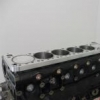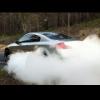Increasing CR. Pin Height or Deck.
Announcements
-
Similar Content
-
Latest Posts
-
By 180 wanabe · Posted
Also had a look at the Nissan JP website looks like the 400r has a slightly shorter ratio than than the regular V37 3.133 VS 2.937 which from a guy who has driven both 3.69 vs 4.11 ratios in the S15 is bugger all. Seems that the AUTO Z runs the same ratio as the 400R but can't find any info as to if its an open or LSD? More often than not the auto LSD is open -
By joshuaho96 · Posted
Do not replace the power steering lines with this stuff. If it's anything like the Chase Bays stuff it will leak and be worse than stock. The reason why the reservoir is on the LH/passenger side of the car is because that's just where the reservoir was most convenient to fit. Don't overthink this stuff. The intake/cold side of the engine is pretty busy on these cars. And again, the hardpipe is designed to be a janky power steering cooler. In theory you can replace it with a real power steering cooler but that's really only for track use where boiling the fluid is a distinct possibility. Start with the low pressure lines feeding the pump from the reservoir. Make sure there isn't a bunch of junk in the reservoir filter. Be careful to not get ATF all over the engine bay. I hate dealing with ATF spills, you can clean it up and the slightest crevice will still release more oil that can still drip over time. You also want to inspect for leaks before you make a mess and can't tell what happened. Most likely you have a leak somewhere that is allowing fluid out and air in. Failing that it's allowing air in but not fluid out. Only place I can really see that happening is on the low pressure side because the pump will pull a slight vacuum to draw fluid in. Everything after the pump is high pressure or lower pressure, approaching atmospheric by the time it returns to the reservoir. -
I did a skidpan night at SMSP this week, it was much cheaper than $350. But yeah, you need to slap an LSD in that thing. I put an OS Giken in the 370Z and it's f**king MARVELOUS even compared to Nissan's viscous LSD. So you're saying it's free now that it's a housing estate? 😂
-
Nah, the car seems to run exactly as it did prior, in saying this it does "seem" to be better down low, like more eager to rev, but that may be 100% placebo effect from intake noise But, I'm not worried about it at all, in the end it is a fairly low compression NA engine that has a well shrouded intake, if it is getting hotter IAT I cannot notice anything negative performance wise from the seat of my pants thrashing it about on the street or sitting in traffic, so meh, car now now makes induction noise so I'm happy
-
Do you have an IAT sensor? It's worth checking it to see. You may be suprised how little gap you actually need to flood your engine with hot air. (I tape up my airbox for a reason) :p
-








Recommended Posts
Create an account or sign in to comment
You need to be a member in order to leave a comment
Create an account
Sign up for a new account in our community. It's easy!
Register a new accountSign in
Already have an account? Sign in here.
Sign In Now